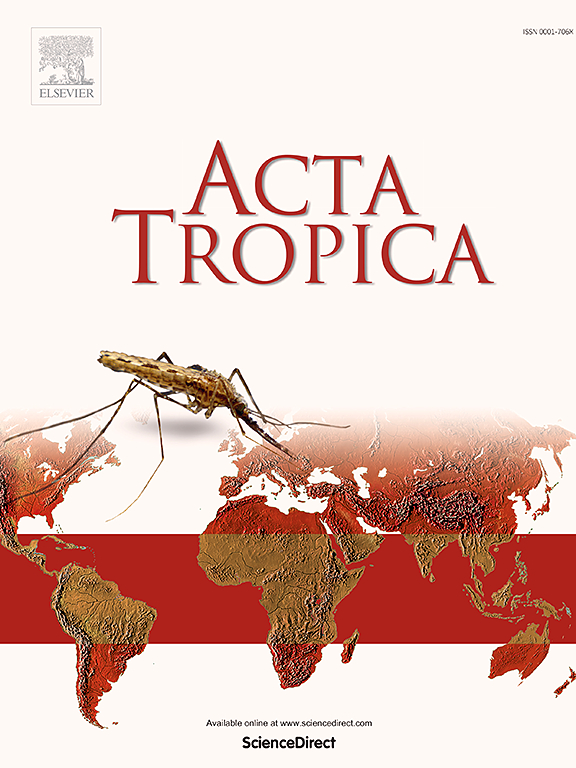哥伦比亚的利什曼病病媒:概述和未来研究路线图
IF 2.1
3区 医学
Q2 PARASITOLOGY
引用次数: 0
摘要
确定血吸虫沙蝇病媒状况的一个主要挑战是选择适当的标准。病媒可按重要性分级,成功传播为最高级别。潜在的病媒通常是根据在传播地的高频率、嗜人性,以及最近通过对野外样本中 DNA 的鉴定来确定的。然而,一个物种传播病原体的能力不仅取决于沙蝇与利什曼原虫相互作用的内在生物学特性,还取决于生态学参数,而这些参数很少得到评估。本研究旨在分析描述哥伦比亚沙蝇作为利什曼伊科寄生虫传播媒介的特征的文献数据。根据科学出版物中包含的信息,结合五项标准,将沙蝇物种分为五个等级,并将 26 个物种视为哥伦比亚利什曼病的潜在或已证实病媒。一至四级为潜在或疑似病媒,五级为已证实病媒。在区域背景下研究病媒至关重要,因为物种的行为会随着环境和生态条件的变化而变化,这意味着一个物种可能在一个地区是主要病媒,但在另一个地区却不是。更好地了解病媒与寄生虫之间的相互作用将有助于制定创新的控制策略和形成重要的流行病学观点。本文章由计算机程序翻译,如有差异,请以英文原文为准。
Incriminating leishmaniases vectors in Colombia: An overview and roadmap for future research
A major challenge in defining the vector status of phlebotomine sand flies is selecting the appropriate criteria. Vectors can be graded by importance, with successful transmission as the highest grade. Potential vectors are often identified based on high frequency in transmission foci, anthropophily, and more recently by identification of DNA in field samples. However, a species' ability to transmit a pathogen depends not only on its intrinsic biology of sand fly–Leishmania interactions but also on ecological parameters, which are rarely evaluated. This study aimed to analyze the literature data describing characteristics of Colombian sand flies related to their role as vectors of Leishmaniinae parasites. Based on information contained in scientific publications using combinations of five criteria, sand fly species were graded into five levels, and 26 species were considered as potential or proven leishmaniasis vectors in Colombia. Levels one to four refer to potential or suspected status, while level five denotes proven vectors. Studying vectors in a regional context is crucial because species' behaviors vary with environmental and ecological conditions, meaning a species may be a key vector in one area but not in another. A better understanding of vector-parasite interactions will aid in developing innovative control strategies and formulating significant epidemiological perspectives.
求助全文
通过发布文献求助,成功后即可免费获取论文全文。
去求助
来源期刊

Acta tropica
医学-寄生虫学
CiteScore
5.40
自引率
11.10%
发文量
383
审稿时长
37 days
期刊介绍:
Acta Tropica, is an international journal on infectious diseases that covers public health sciences and biomedical research with particular emphasis on topics relevant to human and animal health in the tropics and the subtropics.
 求助内容:
求助内容: 应助结果提醒方式:
应助结果提醒方式:


